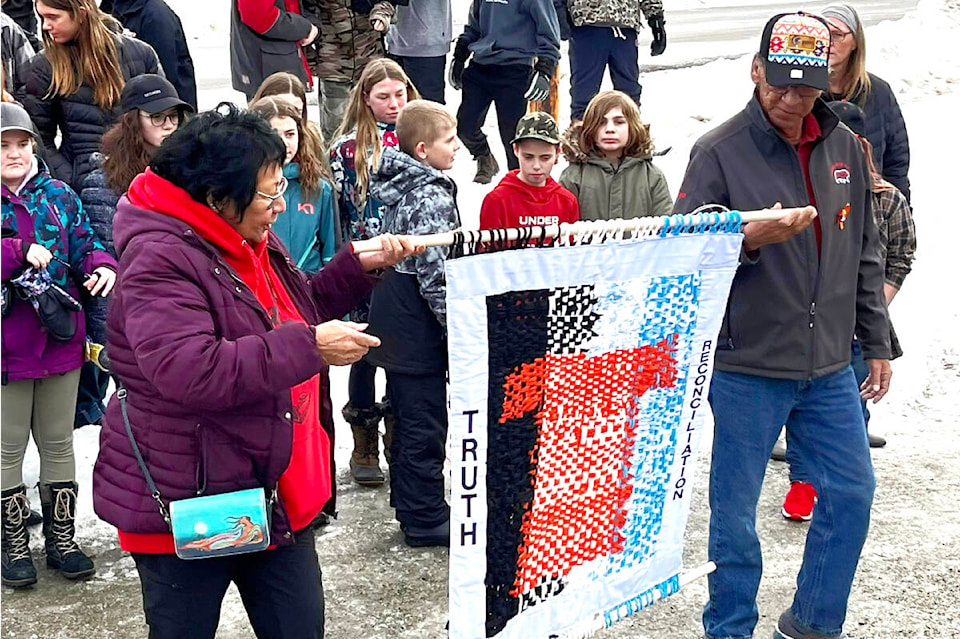One Quesnel school wove First Nations reconciliation right into their daily activities, then donated their efforts to the cultural caretakers of the land on which they learn each day.
Lakeview Elementary School students interlaced their lessons on history and their lessons on creative arts to make a woven tapestry depicting an orange shirt - the symbol of the way Aboriginal cultures were abused through their children by 19th and 20th century colonial Canada. That tapestry was then gifted to the Lhtako Dene Nation, just a short walk across the highway. The students delivered it ceremoniously on Jan. 17.
“We wanted to gift it as a token of truth and reconciliation. Symbolism is built into it. We have a dark side that represents the truth part, and a brighter side that represents the reconciliation,” said Lakeview principal Dean Morrow.
The school community found a number of benefits of the project. On the artistic side, it developed the idea of symbolism.
The orange shirt emerged in recent years as an emblem of Indigenous incarceration in residential schools, and the atrocities committed there, so the weaving of the orange shirt image dovetailed with classroom learning about Canadian history and First Nations understanding.
Morrow said it was also just emotionally helpful, because the small, repetitive, creative movements helped some kids re-regulate their moods if they were feeling sad or upset, and added to the sense of happiness and gratitude for those who were feeling good. Since it was a voluntary task, no one did the weaving work in a way that darkened their spirits.
“It was a school-wide project,” he said. “We tried to get everyone to take part, or everyone who wanted to. We had a big loom and we would put it out on the field, or sometimes inside. Each strand is about six feet long, and it’s attached to the previous ones, so it would just add up as the kids worked on it.”
Some kids would be really keen and come back over and over again. Other students would just add to it a bit now and then, if they wanted.
Looms aren’t standard issue art supplies in B.C. schools. Morrow explained that, “I created the loom. I got the idea from a music festival in Haida Gwaii. I did a similar thing to create a wall-hanging at Red Bluff Elementary. Now that I’m here, I had that experience, and I thought it was an idea that could be expanded, and it became the gift for the First Nation.”
Read More: Outhouse Races return to the Iron Horse Pub in Lone Butte
Do you have a comment about this story? email:
editor@wltribune.com
Like us on Facebook and follow us on Twitter.
